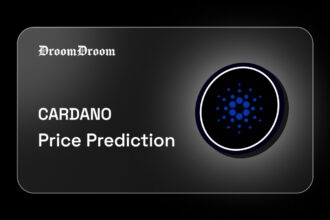Guide to staking on ChaiDEX is a comprehensive tutorial on staking and minting on the ChaiDEX Ecosystem. Introduction of Proof of Stake (PoS) consensus in 2012 ushered investors into an era of generating profits through their crypto holdings. This enabled them to no longer depend on excessive computing power to compete against miners when earning cryptocurrencies.
Staking on ChaiDEX starts by depositing stablecoins into a secure pool for a given duration where your stake accumulates rewards. ChaiDEX, a decentralized exchange, designed its staking mechanism to involve the community in securing the network and as a way of minting local stablecoins.
In a nutshell, ChaiDEX is a cross chain and non bridging peer-to-peer decentralized exchange that supports traders to transact from their native wallets. The exchange is a one of its kind platform given its mission of completely decentralizing modern trading.
Exchanges like Binance and Coinbase which are centralized have often come at a disadvantage for crypto traders who prefer having full custody of their holdings. On the other hand, decentralized exchanges like Uniswap and PanCakeSwap are also problematic due to their reliance on token bridges. Usability on these DEXs is also not satisfactory given the technical limitations for non-web3savvy traders.
Details about Staking on ChaiDEX
ChaiDEX staking mechanism will distribute rewards fairly to all participants in USD-based stablecoins. To join the network in staking,participants must stake their stablecoin of choice on a secure ChaiDEX liquidity pool.
Cooldown Period
Cooldown period is the time between the launch of an offering to the time you are allowed to unstake. In many cases, the feature is meant to achieve fairness across the ecosystem or provide a foundation for community governance. On ChaiDEX, users begin the cooldown period once they stake their holdings.
An official from ChaiDEX who spoke with DroomDroom told us the cooldown period will take 90-days after which stakers will have the option of unstaking their funds.
Income Distribution
ChaiDEX charges 0.1% from every transaction. The decentralized exchange allocates 50% of the total returns to the pool of stakers, and the remaining 50% to the buyback and burn program.
To put it briefly, buyback programs come from traditional securities where companies buy repurchase shares to reduce those already circulating in the market. In Web3, it is typical to come across networks embracing buybacks as a means to achieve token stability. However, coming across one like ChaiDEX which is combining both a buyback and a burn mechanism, that’s rare and often results in the ultimate stability of a network’s utility token.
More details about $CHAIT are covered on the ChaiDEX fundamental analysis here on DroomDroom.
The reward that a participant in the staking pool receives depends on the amount of their stake, and the period they stake. The more stablecoins you stake, the higher the returns you get.
Minting Local Stablecoins on ChaiDEX
Local stablecoins on ChaiDEX represent an agenda by the decentralized exchange to deploy local stablecoins across different jurisdictions starting with India, Oman, Nigeria,Vietnam and the Philippines.
When staking, we mentioned earlier that users will use the stablecoin of their choice. ChaiDEX has made it possible for participants to stake local stablecoins in their regions. This will make it possible for users to determine their earnings in a currency they are most familiar with.
Minting stablecoins on ChaiDEX is simple, thanks to the exchange’s smooth UX. The only thing you have to note is that the maximum amount of stablecoins you can mint in your local currency corresponds to the amount locked in the staking contracts. This design aims to ensure the available local stablecoins are directly proportional to the ecosystem’s volume in stake . But also there are other purposes for ensuring minting stablecoins on ChaiDEX is dependent on the staked volumes:
- Securing the stability of the stablecoin.
- Protect the network from inflationary pressure
- Mitigate risks including undercollateralization and overminting
Minting on the ChaiDEX ecosystem complements its staking feature, creating a self-reinforcing loop where the staking process provides enhancement to the minting capacity. This integration reflects ChaiDEX’s commitment to creating a sustainable, user-focused, and stable ecosystem. One that promotes growth and stability throughout its core functions.
Conclusion
The number one reason for staking is for investors to earn passive income. As of the writing of the Guide to Staking on ChaiDEX, more than half of crypto holders have their cryptocurrencies in a staking pool. Other reasons why a crypto holder/investor may opt to stake their crypto might be to win transaction fees discounts. The rewards of staking has led to almost everyone with a crypto portfolio to stake 20% – 30% of their holdings, numbers on the same Nasdaq articles indicate stakers are even likely to increase in 2024. One of the reasons for this has been influenced by the rise of platforms like ChaiDEX which are easy to use and provide generous staking rewards.



















